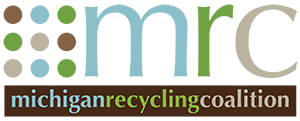Soils for Salmon: Building Soil
Why Build Healthy Soil?
Healthy soil protects our waterways for salmon, orcas, and people. Soil performs valuable functions: nourishing plants, absorbing, filtering and cleaning stormwater runoff. These functions are often degraded during development when vegetation and soil are removed or compacted. Restoring healthy soil is essential to protecting our waterways, salmon, orcas and other wildlife, and our way of life in the Puget Sound region.
The Soil-Water-Salmon-Orca Connection
In native forests around Puget Sound, soil and plants absorb most rainfall and minimize stormwater runoff. 50% of the rain that falls returns to the sky as "evapo-transpiration" (as tree roots pull water from the soil and it evaporates from leaves and needles). Almost all the rest filters slowly into and through the soil, to feed streams year ’round. But typical development practices remove forests and topsoil, degrading the land's ability to hold and recycle rainwater. After typical development, only 15-30% of rain evaporates, while most rushes swiftly off roofs, roads, and compacted soil (known as "impervious surfaces"). This erodes streams, causes flooding, and carries pollution and sediment, damaging essential habitat for salmon and other aquatic life, and the orca whales that feed on them.
Native soils and forests are disappearing rapidly in the Puget Sound region. Conventional development practice has been to strip topsoil during grading, compact the whole site with heavy equipment during construction, and replace only 1-2 inches of soil over the compacted subsoil before landscaping.
The impacts on salmon, orcas, water quality, and streams are well-documented. Not only are winter peak storm flows much higher, but summer stream flows are much lower because groundwater is not being recharged. Increased runoff from roads, buildings and landscapes carries oil, grease, metals, pesticides and other pollutants into our waterways and into Puget Sound. Scientists at the University of Washington and elsewhere have documented significant loss of stream health with the first 5-10% of impervious area constructed in watersheds under conventional development practices.
Salmon in the City (PDF) Scientific papers presented at this 1998 conference highlighted the need to change development practices, especially to restore soil hydrology functions on every site. That research led to soil restoration requirements in the Washington State Stormwater Manual. Washington’s 2019 Orca Recovery Task Force recommends reducing polluted runoff to restore our salmon and the orca whales that depend on them. Washington’s Stormwater regulations (PDF) now require restoring construction-impacted soils by amending with compost.
